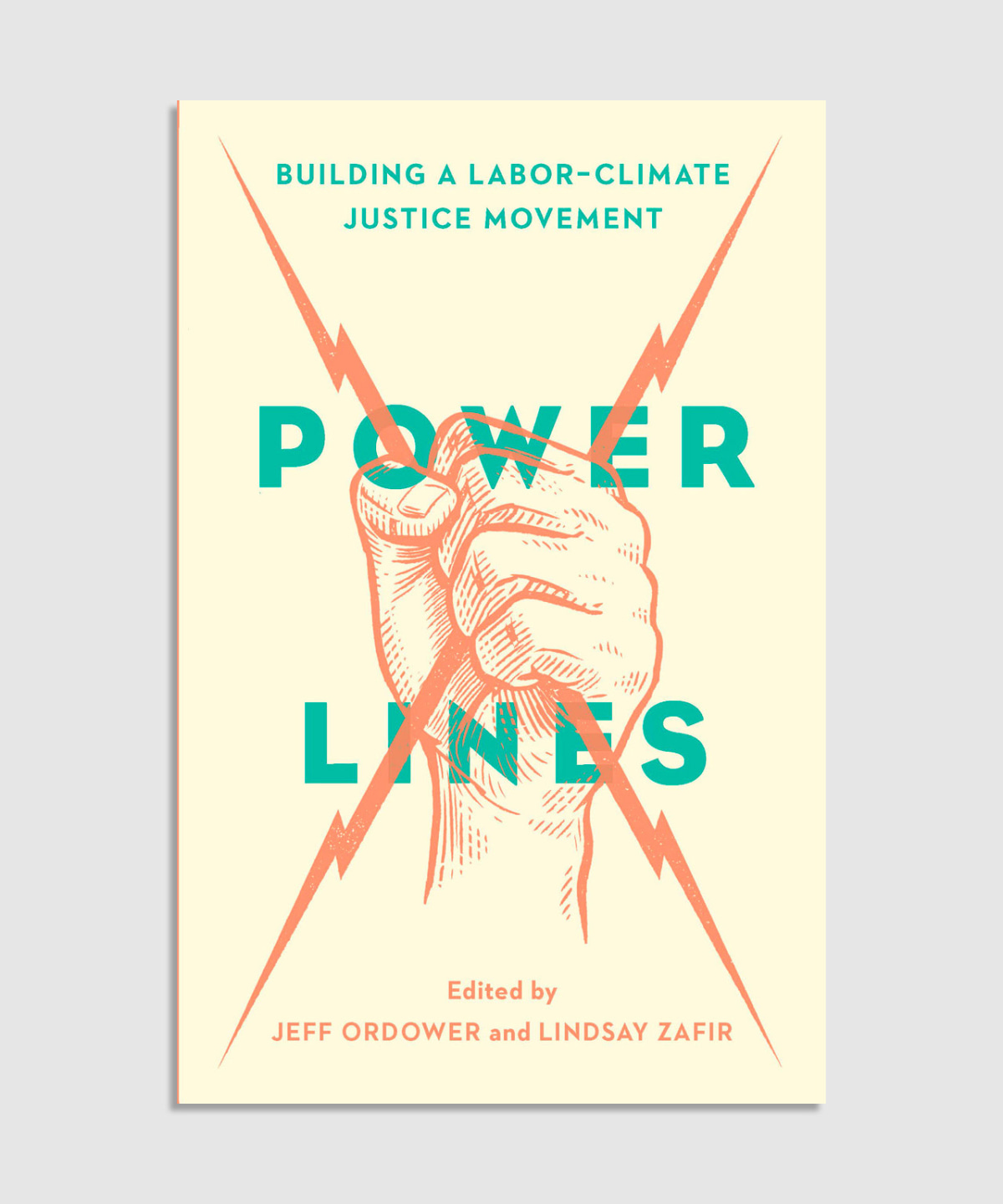- | 9:00 am
‘There will be no jobs left on a dead planet’: Why the labor and climate fights should be waged together
For all of us to survive, labor and climate leaders need to develop a culture that’s centered on shared goals and long-term alliances.

On April 29, 2022, I joined oil workers from the United Steelworkers Local 5 on the picket line to fight for a fair contract. I climbed aboard a Greenpeace USA inflatable boat, ready to flank the 500 workers who were on strike by confronting the oil tankers that had been making daily trips to the Chevron refinery in Richmond, California. We found common ground in taking action to combat the exploitative greed of Chevron’s executives.
The survival of our planet depends on our ability to bridge the fight for workers and the fight for a sustainable future. Too often, these fights feel unbridgeable. But that morning, I saw a new opening for how to connect our struggles. In the downtime between tankers approaching, I asked the workers why they were striking. They told me stories I’d heard countless times before: healthcare costs skyrocketing, paychecks not keeping up with inflation. But they also brought up safety concerns at their workplace as well as concerns about the pollution their work contributed to. As I listened, I thought about how corporations have pitted us against each other when we all want the same things: a good job, clean air to breathe, safe and healthy communities.
In 2022, I joined Greenpeace USA as its chief program officer because, after decades in the labor movement, it had become clear to me that there will be no jobs left on a dead planet. In California, where I worked for many years as a labor leader, nearly 13 million acres have burned in forest fires over the past 10 years. That’s 1 of every 8 acres in the state—double what burned in California during the previous decade. Meanwhile, record-breaking heat waves across the state have claimed thousands of lives.
We are living in a climate emergency, and our only hope for survival is swift action across all levels of leadership to move our society off oil, gas, and coal. The transition from fossil fuels will hit workers first and worst; therefore workers and the labor movement must play a central role in bringing forward the solutions.
We need both labor and climate movements to win the kind of transformative changes we seek. But too often, we show up for each other in small moments without building the infrastructure that can support an enduring climate-labor movement over the long haul.
Many environmentalists, for example, have demanded fair and equitable jobs for workers. But how many of us have built structures to ensure that workers are at the table defining what that transition looks like? How many of us have invested in sustained organizing to deliver material wins for workers? On the flip side, many labor organizers have been too timid about spelling out what it will really take to forestall the worst effects of climate change. As a result, too few labor organizations have invested resources in fighting for a just transition—focusing instead on protecting the little that we have on a dying planet.
But for all of us to survive—and thrive—labor and climate leaders need to develop a culture that is centered around shared goals and sustained alignment. Doing so requires us to move beyond tactical, short-term alliances to develop the infrastructure that supports labor-environmental coalitions through multiple campaigns and election cycles.
BUILDING LASTING COALITIONS
In 2006, I quit my job as the Southern California director of the California Labor Federation to become the political director of the Orange County Labor Council.
When I arrived, the Labor Council was largely dormant and underperforming. I knew we needed a longer-term approach to building worker power than just collecting cards for individual union elections. So I started looking for what I call vacuums—the gaps in our long-term movement-building infrastructure. For example, when I first started, the Labor Council office was in a small outer building of another local union—on an island by ourselves. I convinced another union to go in on a new building in the center of town. We called up local community groups to ask if they needed an office or meeting space. We could see that our movement was fractured, and we wanted to be a hub of progressive organizing.
We also began a new program organizing with the communities of faith, whom the Labor Council hadn’t previously engaged with. We also brought a strategic political lens to our faith-based organizing: We mapped out where every legislator in the county worshiped and enlisted organizers and community members to organize them in their places of worship.
We also began a long-term political outreach program called the Voter Infrastructure Project, a team of permanent canvassers who did precinct walking for six hours each day. In six years, we registered 140,000 voters.
We didn’t just talk to the voters, we also engaged elected officials. We required anyone seeking our endorsement to take a six-hour course on workers’ issues. Since this was a pre-endorsement requirement, half of the people who went through the class didn’t even get endorsed. But they still got the education.
This kind of long-term power building provided the crucial building blocks for one of the most righteous fights I’ve ever been a part of. In 2011, I visited one of the worksites of sanitation workers, who included trash truck drivers and landfill workers. Our site guide explained that back in 1999, a local union had tried to organize these workers. They had collected the number of cards necessary to force a National Labor Relations Board election, but two weeks before the election, the workers believed that management called Immigration and Customs Enforcement (ICE). The worksite was raided, and almost all of the workers were deported. Devastated, the union had not tried to organize the workers since.
The working conditions were brutal and humiliating. The workers spent eight hours a day outside, in the Southern California sun, searching through trash bins for recyclable items from regular residential and commercial trash. The workers were issued one pair of gloves, which generally didn’t last more than two hours, and one bottle of water per eight-hour shift. But one of the most degrading conditions of their jobs was that, every day, each person had to pick a time to go to the bathroom. They would have to write that time on the board, and they could not deviate from the set time.
We organized a meeting of our community and clergy leaders, who became determined to help them organize. The coalition sent a delegation to demand management sign an agreement not to use ICE to retaliate against the workers. Because of how much community and worker power we had built in Orange County, management agreed.
Seven months after I first met the workers, 78% of them voted for the union. The contract provided healthcare, two weeks of paid vacation, paid sick leave, more than double their previous take-home pay, and a pension. And the bathroom board—a symbol of the unjust, unfair, and degrading treatment of the workers—was gone.
SHARED GOALS FOR A PRO-WORKER, PRO-CLIMATE ECONOMY
As we work to build broad, cross-sectoral movement power, we need shared goals to unite around. What is our pro-worker climate agenda?
Too many times, I’ve heard environmentalists default to an agenda for a just transition that lacks breadth, specificity, and boldness. For example, new solar panel installation jobs are not sufficient when the workers make only a fraction of the pay that they would at a refinery. While I certainly don’t speak for every worker, I have walked many precincts and listened to thousands of workers and labor leaders in communities whose local economies are or historically have been dependent on fossil fuel production. I’d like to propose a handful of solutions that, if implemented properly, might meet many of the needs of workers and communities impacted by the transition away from fossil fuel production.
First, we must deliver bold investments in truly sustainable industries, coupled with strong labor standards. There is so much potential for good-paying union job creation in the electrification of our ports, buildings, homes, and schools. If targeted to historically energy-producing regions, some of the same investments that are needed to combat the climate crisis could become a lifeline to diversify and revitalize those same local economies.
Incoming support from the federal government (from both the Infrastructure Investment and Jobs Act and the Inflation Reduction Act) could create hundreds of thousands of union jobs at the forefront of the clean energy revolution and across sectors like manufacturing, transportation, land remediation, and infrastructure cleanup, and other potentially sustainable industries such as offshore wind development. It is urgent that these funds be deployed quickly and with all available labor standards attached to ensure that good union jobs are ready and waiting for any worker who is affected by the contraction of the fossil fuel industry.
Second, we must deliver funds to workers and communities proactively and directly. A disorganized transition is going to disproportionately affect workers in existing industries. These workers have done the hard work of powering our economy for generations and must be respected and supported during the transition away from fossil fuels. This includes support for people in all stages of their careers, from training for early-career workers to pension guarantees for those approaching retirement. How about fully funded pensions, wage replacement guarantees to make up for salary gaps, paid healthcare benefits, priority hire for new jobs, free college and trade school, and relocation expense coverage? How about a fund to replace lost tax revenue for communities that have relied on the fossil fuel industry to support critical public services?
Some unions are already leading in defining a potential blueprint for worker and community support through the transition. In June 2021, 20 California unions unveiled their California Climate Jobs Plan for how California can, over the next decade, create over 400,000 jobs per year while cutting climate emissions in half. Alongside that plan, the coalition outlined how an equitable transition program could provide effective relief for displaced fossil fuel workers as well as their families and neighbors. Their research showed that a plan that takes into account voluntary retirements will be cheaper and more worker-friendly than the episodic or abrupt closures that are virtually inevitable if we leave the transition to the vulture CEOs.
Another inspiring example is the work of the Colorado AFL-CIO, which, alongside other unions and environmental and community groups, helped pass a law to create the Office of Just Transition in the Colorado government to assist communities and workers affected by the decline of the coal industry.
PUTTING WORKERS AT THE CENTER
At Greenpeace, we have a lot to figure out about how to center workers in our campaigns and to build long-term partnerships across the labor and environmental movements.
One concept we’re exploring is the creation of a workers’ council—a structure for workers and labor leaders to weigh in on the environmental movement. The Big Greens don’t always have rank-and-file members who participate in the way that union members do, so we need a formalized way for workers to advise us on the policies and programs we’re pursuing. The council is a work in progress, but the idea is that it will offer workers a way to vet the environmental movement’s plans and create a platform for ongoing dialogue.

For too long, corporate leaders of the fossil fuel industry have pretended to care about workers’ interests, all to prop up their own bottom line. The environmental movement must disrupt that dynamic by showing that we are serious about bringing workers to the table to build the power we need to deliver material benefits on a timeline that will matter.
There is no way to prosper on a dead planet. The work ahead is to figure out how to build alliances—from picket lines to state houses—to push for something the fossil fuel industry will never voluntarily do: create a timeline, dedicated funding, and a plan to phase in new union jobs as we phase out fossil fuels.
Benjamin Smith, senior campaigner for strategic partnerships at Greenpeace USA, contributed to this article.
©2023 Tefere Gebre. This excerpt originally appeared in Power Lines: Building a Labor-Climate Justice Movement, published by The New Press. Reprinted here with permission.






































